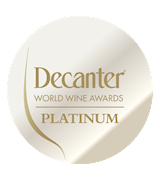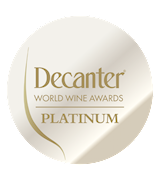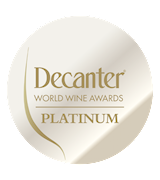Best Bolivian Alcoholic Beverage Types
Singani is a brandy variety that is exclusively distilled from Muscat of Alexandria grapes. Due to the specific terroir and the strict rules regarding the production method, the base wine is complex, aromatic, and flavorful. Signani has been produced since the 16th century, and it was invented as an alternative to Spanish orujo brandy.
Its origin is closely associated with Potosí—once an affluent city and the center of the silver mining industry—but now it is produced in Tarija, Cinti, Potosí and La Paz. In Bolivia, singani is usually enjoyed neat, preferably over ice and accompanied by a slice of lime, but it also incorporates well in cocktails and long drinks, out of which the most notable are Chufly and Sucumbé—a milk-based drink that is enriched with spices.
MAIN INGREDIENTS
Sucumbé is a warm wintertime cocktail that combines milk, singani brandy, spices, and eggs. Often compared to eggnog, it is made with a milk base that is infused with spices, typically cinnamon and cloves. The milky, aromatic base is then sweetened and combined with beaten eggs.
Sometimes only egg whites are used, and some versions do not use eggs at all. Less traditional options also include condensed milk or vanilla. The combination is vigorously beaten, traditionally with a special wooden whisk until a delicate, frothy layer is formed on top.
Té con té is a warming Bolivian beverage whose name translates as tea with tea. It is made with tea, cinnamon, lime, and singani—an aromatic and potent Bolivian brandy distilled from Muscat of Alexandria grapes.
The preparation is simple, and it starts with freshly brewed black tea that is infused with cinnamon. The infusion is then spiked with singani. It is garnished with a lime wheel and optionally a cinnamon stick. Té con té is always served hot, and it is mostly enjoyed in the wintertime.
MAIN INGREDIENTS
Coctel de Tumbo is a Bolivian creamy cocktail made with a combination of sweet-and-sour-flavored banana passionfruit (native to Bolivia and Peru) and singani, sometimes with the addition of condensed milk. In order to prepare it, all ingredients should be blended, then transferred to martini glasses.
It is recommended that no ice should be used as it would mask banana passionfruit’s (tumbo) fragrance.
MAIN INGREDIENTS
Yungueño is a traditional cocktail made with a combination of singani, simple sugar syrup, and orange juice. In order to prepare it, all ingredients should be well-mixed, then left to cool down in the refrigerator, as the drink is traditionally served very cold.
The name of the cocktail refers to the Yungas, a region of humid valleys on the eastern slopes of the Andes.
Garapiña is a Bolivian drink believed to have originated in Quillacollo. In its basic form, it is a combination of cinnamon and chicha—a corn-based alcoholic beverage. The mix often includes coconut, cinnamon ice cream (helado de canela) instead of cinnamon, making the drink more palatable, and sometimes fruit.
It is often tinted with the seeds of airampo cactus that give the drink a distinctive red hue. This local specialty is usually available at chicherías.
MAIN INGREDIENTS
Chuflay is a popular Bolivian cocktail made with a base of singani – a brandy made from distilled white Muscat of Alexandria grapes. In order to prepare it, singani is poured in a tall glass over ice, followed by either Sprite, 7-Up, or ginger ale.
The cocktail is typically garnished with a lime slice, and it is especially popular at festive events such as weddings and promotions.
Leche de tigre is a Bolivian drink made with milk, cinnamon, sugar, and singani—the popular Bolivian brandy distilled from Muscat of Alexandria grapes. The milk is heated, sweetened, and infused with cinnamon. It can be thickened with cornstarch and enriched with egg yolks, while the variations sometimes use cloves or replace regular milk with condensed milk.
Bolivian leche de tigre can be served warm or chilled, and it is a staple on various festivals and celebrations. It should not be confused with the more popular Peruvian version made with ceviche juice.
Best Bolivian Alcoholic Beverage Producers
Best Bolivian Alcoholic Beverages
AWARDS

Decanter World Wine Awards - Platinum
2022
AWARDS

Decanter World Wine Awards - Platinum
2016
TasteAtlas food rankings are based on the ratings of the TasteAtlas audience, with a series of mechanisms that recognize real users and that ignore bot, nationalist or local patriotic ratings, and give additional value to the ratings of users that the system recognizes as knowledgeable. TasteAtlas Rankings should not be seen as the final global conclusion about food. Their purpose is to promote excellent local foods, instill pride in traditional dishes, and arouse curiosity about dishes you haven’t tried.



